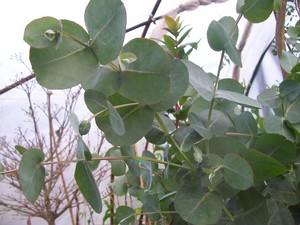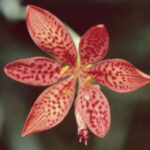Eucalyptus is usually regarded as a plant suitable only for hot and dry climates. There are a few varieties that will perform well in even cool areas. Despite their origins in Australia, some species will tolerate prolonged periods of cold. The rounded silvery grey foliage not only looks spectacular in the landscape, it can be used for floral arrangements and crafts as well. Growing hardy eucalyptus successfully is really a matter of variety selection and finding the right site and soil.
Eucalyptus archeri is the hardiest of the species. In its original habitat, it grows at high elevations in Tasmania. It will tolerate temperatures down to 0 F once it is well established. Colder weather may cause this eucalyptus to freeze to the ground, in which case it will resprout from the roots when spring arrives. In fact, this habit of replacing top damage with healthy new growth will give it a bushy habit in some areas.
Eucalyptus cinerea has the same rounded foliage as archeri, but it is slightly less hardy. This plant will suffer damage at temperatures below 15 F. In USDA growing zones 8 through 10, it will be more likely to achieve some size, rather than reverting to a bush from from repeated cold damage. Only in zones 9 and 10 will this eucalyptus have a chance to reach its mature height of thirty to forty feet.
Eucalyptus gunni is another hardy Tasmanian native. It generally more suitable for zones 8 through 10, but will grow in zone 7 with well mulched roots. This eucalyptus actually produces an edible sweet sap as a mature tree, but colder climates will have to be content with this species as a large shrub.
Eucalyptus nicholi has foliage that is rather unusual for the family. Leaves are narrow and delicate, silvery grey in color and resembling that of a willow in appearance. Twigs are an attractive reddish color, as is the bark. The leaves have a definite peppermint scent. Eucalyptus nicholi can handle temperatures down to 10 F, which makes it suitable for zones 8 through 10.
After selecting the appropriate species, the next step is plant selection. Try to avoid purchasing severely root bound or overgrown plants. Eucalyptus does not respond well to root damage. A small plant properly cared for will rapidly outgrow a very large, root bound specimen. Top heavy plants need to be staked, and may suffer more root damage if they blow over. Spring planting is very important in places where hardiness is a concern. The tree needs a sufficient amount of time to become healthy and well rooted before winter arrives.
The planting area should be in full sun. Soil needs to be well drained, especially in areas with heavy winter rains.
When planting eucalyptus, loosen the roots very gently to avoid damage. Water well, and place some mulch around the base of the tree, keeping the mulch away from the trunk. Try to avoid staking a top heavy eucalyptus if the foliage can be pruned enough to make it stand upright on its own.
Pruning is helpful not only to keep the top growth in line with root development, but to promote the typical rounded eucalyptus foliage. Eucalyptus trees produce two different kinds of leaf growth; juvenile and adult. Juvenile growth is the round ‘silver dollar’ foliage commonly seen in floral arrangements, and the one most people find attractive. Adult growth is long and narrow, almost spear shaped. In warm zones, gardeners may want a full sized tree, in which case pruning is pointless. Zone 7 and 8 gardeners can make the best of their unpredictable cold weather, and prune off winter damage every spring, allowing a new flush of rounded juvenile growth.
Winter damage can be hard to spot initially. Completely blackened limbs can be removed, but wait until warm temperatures arrive in early summer to do hard pruning. A eucalyptus may appear to be alive and healthy with only minimal damage, until summer arives and the tree makes no new growth except from the roots and the base of the trunk. If this happens, the entire trunk can be removed down to the first healthy bud. This may seem like a drastic pruning measure, but by mid summer the tree will have responded with extensive growth.
Eucalyptus trees that must be grown as shrubs still have their ornamental qualities. They look stunning planted as a backdrop for other plants with purple foliage, such as barberries and smokebush. Spring prunings can be used inside the home for floral arrangements and even potpourri.





